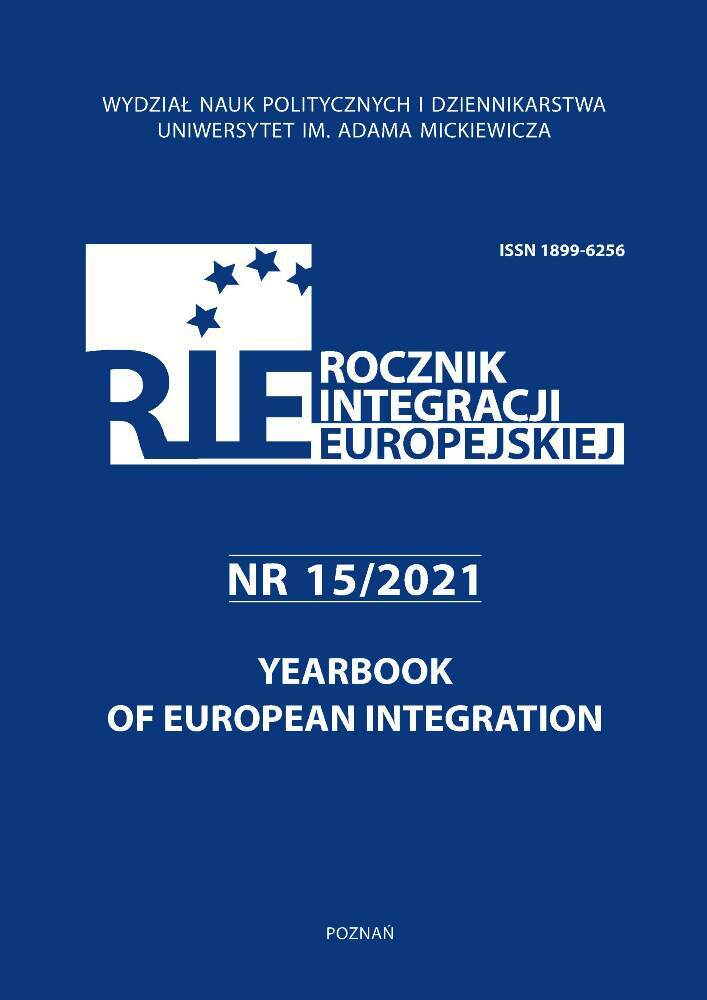Abstract
To build the story of the post-pandemic Union, we seek to understand change and its impact on our lives. The year 2020 has eroded faith in a future conceived as a better version of the present. The pandemic has provided the arguments for the assumption that the project of modernity is running out of steam. We now know that we need to slow down, and look for other ways. The EU is trying to read these signs of the times through the Green Deal and the multi-annual budget, which is supposed to be an investment in change. The Community draws strength and oxygen for solidarity from overcoming its own weaknesses. It is moving towards a Union of closer cooperation. It does not only want to equalize differences between the rich and the poor, but also to create a different economic model. It seeks a new role in the world because it knows that it must rely more on itself. Out of this transformation emerges the contemporary European imaginary, a set of perceptions and emotions that guide human actions. They are particularly important for younger generations who have “stopped seeing” Europe. The pedagogical challenge is to explain the contemporary sense of being together. Poland has a chance to make the ongoing changes, including the green transformation, a strong developmental impulse. This is not helped by fostering anti-EU sentiments in the country.
References
Ananicz Sz., Buras P., Smoleńska A. (2021), Nowy rozdział. Transformacja Unii Europejskiej a Polska, Raport Fundacji im. Stefana Batorego, Warszawa.
Bendyk E. (2020), Punkt Nemo. Skok do krainy po-wolności, „Polityka”, nr 44.
Bradford A. (2020), The Brussels Effect. How the European Union Rules the World, Oxford University Press.
Kołton J. (2020), Świat wysokich prędkości. Późna nowoczesność i teoria krytyczna Hartmuta Rosy, w: H. Rosa, Przyspieszenie, wyobcowanie, rezonans, Europejskie Centrum Solidarności, Gdańsk.
Markowski R., Stanley B., Zagórski P., Żerkowska-Balas M. (2020), Opinie Polaków o działaniach Unii Europejskiej w dobie pandemii: ciągłość i zmiana, Raport, Komisja Europejska Przedstawicielstwo w Warszawie, Uniwersytet SWPS.
Morawski I. (2019), Wpływ integracji europejskiej na polską gospodarkę, w: 15 lat Polski w Unii Europejskiej, red. A. Radwan-Röhrenschef, Instytut In.Europa, Warszawa.
Napiórkowski M. (2019), Jakiej mitologii potrzebuje dziś Europa?, w: Priorytety nowej Komisji Europejskiej a interesy Polski. Oceny i wnioski Team Europe, red. J. Barcz, Z. Czachór, Komisja Europejska Przedstawicielstwo w Polsce, Warszawa.
Napiórkowski M. (2020), Nadal wierzę we wróżki, „Tygodnik Powszechny” z dnia 5.07.2020 r.
Niżnik J. (2019), How to make nationalisms in the EU member states a pro-European force?, “ESU Working paper”, no. 1, Polish Academy of Sciences, Institute of Philosophy and Sociology.
Nowak B. E. (2021), COVID-19 testuje multilateralizm, „Rocznik Strategiczny” 2020/21.
Prawda M. (2017), Wspólnota wyobraźni, „Polityka” Pomocnik historyczny, nr 1.
Prawda M. (2020), Zielony Ład – europejska odpowiedź na nowe czasy, „Idee dla Polski”, Kongres Obywatelski, Thinkletter z dnia 26.11.2020 r.
Prawda M. (2021), Polacy i Niemcy w nowym imaginarium, „Dialog” Magazyn Polsko-Niemiecki, nr 135.
Reckwitz A. (2020), Das Ende der Illusionen, Suhrkamp, Berlin.
Rosa H. (2020), Przyspieszenie, wyobcowanie, rezonans, Europejskie Centrum Solidarności, Gdańsk.
Rotfeld A. D. (2020), Porządek międzynarodowy w czasach pandemii, „Rocznik Strategiczny” 2020/21.
Taylor Ch. (2010), Nowoczesne imaginaria społeczne, Znak, Kraków.
van Middelaar L. (2021), Das europäische Pandämonium, Suhrkamp, Berlin.
